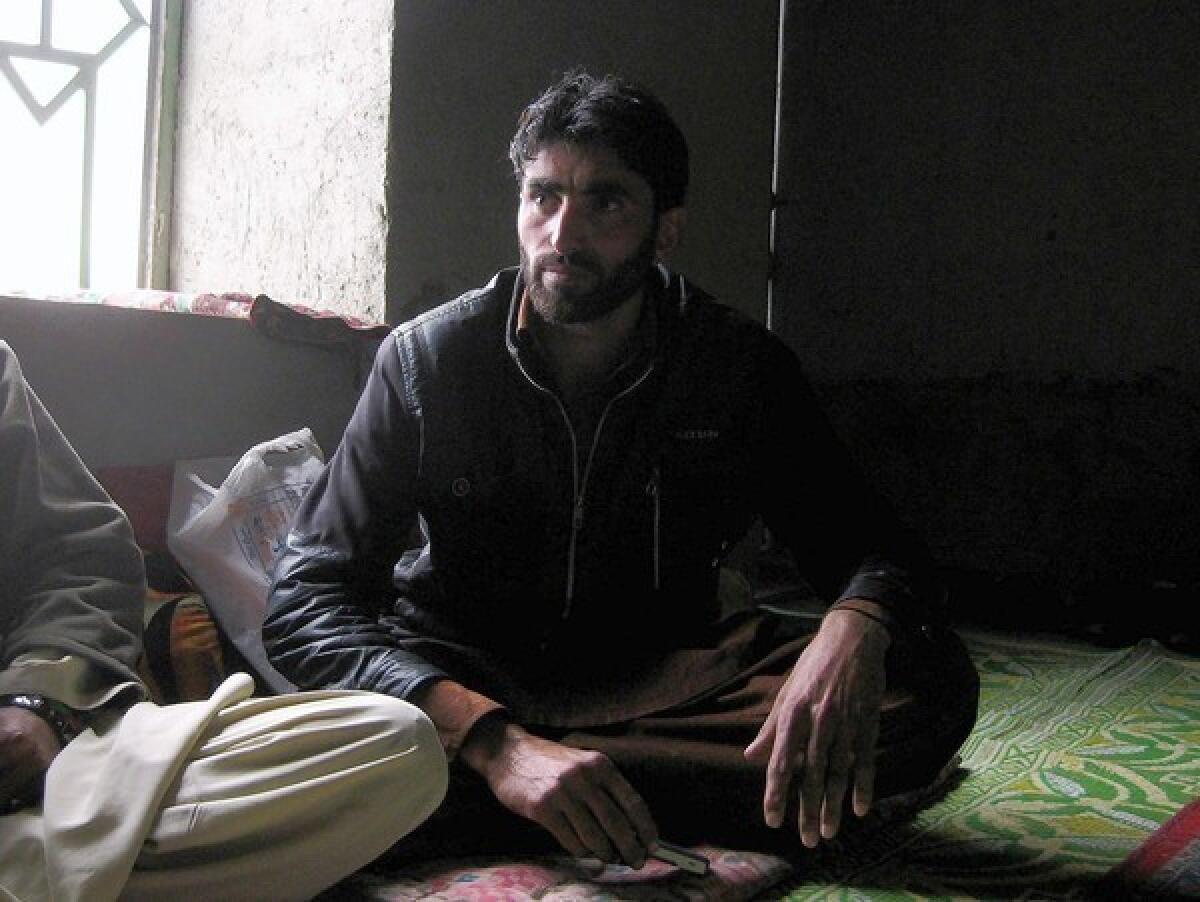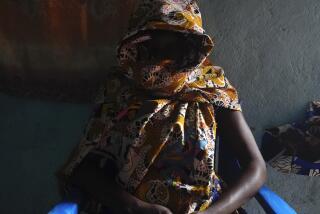After loss, Afghan shadow warrior still wishes to fight Taliban

KAMA, Afghanistan — For more than two years, he was part of a secret, CIA-trained advance team for America’s shadow war in Afghanistan, helping to collect intelligence that led to the killing or capture of Taliban suspects.
Then, last September, having quit the team because of Taliban threats, the young stonemason and his family tragically found themselves on the wrong end of that intelligence. Shrapnel from a U.S. drone strike on two insurgent leaders struck and killed his younger sister on their small farm in eastern Afghanistan.
The stonemason, Saidaa, who, like many Afghans, uses one name, fled with his family last fall to the Taliban-free village of Kama, a collection of mud-walled houses arrayed around a lush, quiet plain two hours east of Kabul. Yet despite his family’s loss, Saidaa retains a surprising aspiration: “I would like to go back and work for the Americans,” he says.
Saidaa’s years-long story of fight and flight offers a reminder that even as the United States winds down its war in Afghanistan, ordinary Afghans remain caught helplessly between U.S. forces and the Taliban. The heartbreak of his sister’s death does not trump his need to earn a living in a country where economic opportunities outside the war remain scarce.
“Whatever happened, that was from God,” Saidaa says softly. “We know she wasn’t the target.”
The transfer of fighting responsibilities to Afghan government forces by the end of next year will mark the conclusion of the U.S. combat mission here after more than 11 years, 2,100 American fatalities and many more thousands of Afghan civilian deaths. But for Afghans whose towns and villages remain battle zones, the looming withdrawal of U.S. combat forces brings only more questions:
Can Afghan forces subdue the Taliban? Will the United States continue to back the Kabul government with financial and military aid? Will a new era provide more economic opportunity for people like Saidaa, who has failed to find steady employment since his 2 1/2 years working for the CIA?
“My brother and I, and some friends, we’re looking for a job — any job,” says Saidaa, a 27-year-old father of three, seated on the cold concrete floor of his rented home in Kama. “We’re willing to work on a base. We’ll work anywhere in the country.”
He looks more like a schoolteacher than a militiaman, with a neatly trimmed beard and a gentle handshake. But he quickly produces a certificate of completion of a four-week U.S. training program — a crudely designed color printout that reads: “Counterterrorism Pursuit Team, Asadabad Base, Kunar.”
Six years ago, when the U.S. was expanding the war effort, CIA officers recruited Saidaa into the clandestine paramilitary unit that tracked Taliban insurgents along the Pakistani border. Equipped with night-vision goggles and GPS devices, the Afghan teams set out under moonlit skies into towns and villages on both sides of the frontier, Saidaa says, recording the locations of reputed militants.
“We brought the GPS coordinates to the Americans, they targeted and killed them. That was the deal,” recalls Saidaa.
He speaks of working for the OGA — “other government agency,” code for the CIA — with a fondness that seems almost wistful, as if the intervening years had dulled his memory of the risks he took. Although he says he never fired a weapon — the one time they encountered insurgents on a mission, their CIA bosses radioed not to attack — he became a target from the moment he joined the team in late 2007.
Insurgents seeded the road to the U.S. base with bombs, killing several of Saidaa’s colleagues. He started walking once a month from his village of Chinar to Asadabad, three hours each way, until the Americans decided to ferry him and others to the base via helicopter.
Although he earned $450 a month — twice the salary of a police officer, a sign of how much the CIA prized his team — he shared few details of the job with his family.
“I would have tried to stop him,” says his father, Aslam.
In fact, few outside the CIA even knew of the team’s existence until 2010, when journalist Bob Woodward revealed in the book “Obama’s Wars” that the agency had created the 3,000-man force as part of its covert war in Afghanistan and Pakistan.
But it was no secret to the Taliban. One morning an insurgent leader appeared at Saidaa’s door with a warning: Stop supporting the Americans, or else.
For the next two years he worked odd jobs in Kabul — laying bricks, hawking snuff. He assumed his war experience would help him land full-time work, but there was little market for a lightly educated man whose main skill was reading GPS coordinates.
He was in Kabul that September morning when the call came: His sister, Bacha Zarena, barely 15, had been gravely wounded in a drone attack. Relatives rushed her to the hospital in Asadabad, but she bled to death in the car.
Killed in the strike were two Taliban commanders known as Engineer and Hizbullah, who had banned cigarettes and music, imprisoned men who shaved their beards and threatened one of Saidaa’s cousins for daring to install Internet cables. But new leaders swiftly took their place. When U.S. forces offered to pay about $4,000 in compensation for Bacha Zarena’s death, Aslam was afraid to travel to the base to collect the money.
“The Taliban wouldn’t have let me live,” the father says. Finally, the family packed some belongings into rented SUVs and fled 50 miles south to Kama.
“Even after the drone strike, I kept waiting for the day the Taliban would leave our village,” says Saidaa. “But they’re still there.”
The CIA-run team still works out of Asadabad, Saidaa says, but with the U.S. presence in Afghanistan shrinking, its future is unclear. Saidaa’s own fate is no more certain. The only job for which he feels equipped is one that probably won’t exist when his country enters the post-American era.
“It’s very difficult even now to find a job like that,” he said. “Maybe a year from now, it will be impossible.”
More to Read
Sign up for Essential California
The most important California stories and recommendations in your inbox every morning.
You may occasionally receive promotional content from the Los Angeles Times.










